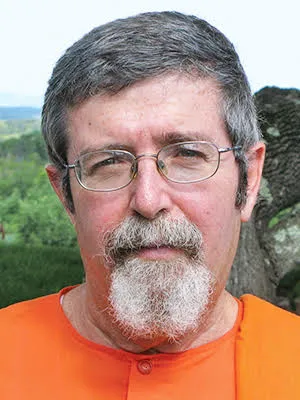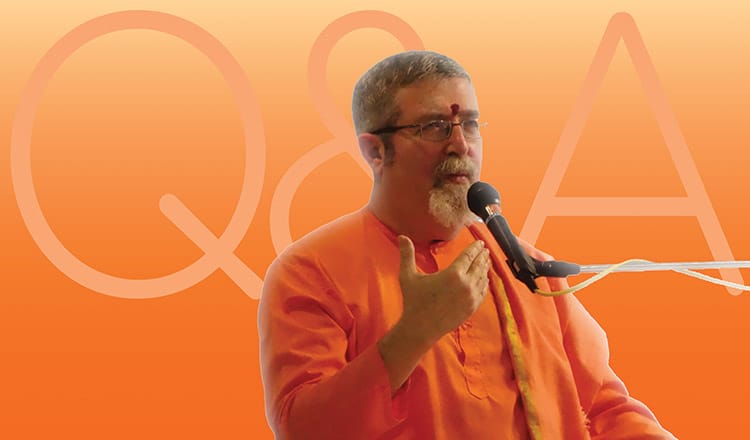Sivananda Bahamas Blog
Expand Your Horizons …
Our Blog
How to Practice Positive Thinking
Question: Replacing a negative thought with a positive thought seems like an emotional denial. How do we properly practice positive thinking?
Answer: There are several ways to practice positive thinking. First of all, when negative thoughts come into the mind, the best thing to do is to meditate on them in the following way: “Here is a negative thought, or a negative emotion. I am going to meditate now, to see the consequences of this negative thought or emotion.” This is the meditation: What are the short-term effects of this emotion? Are they benign or are they harmful? What are the long-term effects?
If you come to the conclusion that the effects of this negative thought or emotion are not benign, but are harmful then, first there should be a strong determination that “I need to neutralize this way of thinking. I need to replace it with a different way of thinking . . . I need to move in a different direction, because I can see that this thought, this way of thinking and these types of emotions are taking me in this direction.” Therefore, the conclusion is “I need to go into the opposite direction.”
I have to turn away from the thought and emotion, and to move into the opposite direction. Swami Sivananda said sometimes “You walk on the road and you see a ferocious animal,” such as a tiger, or a lion. What do you do? You turn in the other direction. You just choose another path and you do not go in the negative direction.
Now you are determined. You are going to change the direction of your thought or emotion. How do you change the direction? Since it is a thought, and it is an emotion, you meditate on the opposite thought and the opposite emotion. Within the mind, thinking in a certain way is taking a certain mental direction. When you think in a different way, you are taking a different mental direction. I turn to the other direction, and I think in an opposite way to the harmful thought, in an opposite way to the harmful emotion. And again, I meditate.
Here is the opposite thought. What will be the consequences of following this way of thinking? What will be the consequences of following these types of emotions? What will be the short-term, but also long-term consequences? If I find that the consequences are very benign to myself and to others, then I make a determination that “Yes, I am now going to cultivate these types of thoughts, and I am now going to cultivate these types of emotions.” I will cultivate positive thoughts and emotions because the mind can be cultivated like a garden. In a garden, you can cultivate certain crops, and certain weeds you can remove.
It is similar with the mind. Mind can be cultivated. You can decide which type of plants, which type of crops you would like to cultivate within the mind, and which type of plants or crops you would like to remove from the mind. This can be done.
This is one way to replace negative thoughts with positive thoughts, which is called pratipaksha bhavana. Pratipaksha bhavana means thinking the opposite thought. But we do not do pratipaksha bhavana in a mechanistic way — we need to meditate first. You have to be convinced that, “Yes, this way will lead you there, and the other way will lead you somewhere else.” This conviction must be there, and strongly. And again and again, whenever a negative thought comes, you must meditate. You must see where the negative thought leads you. And the other way around — you have to see where positive thinking leads you. Then you have to cultivate your mind.
There is another system of positive thinking, which belongs to the philosophical system of Vedanta. There is a practice within Vedanta which utilizes imagination. Imagination can be utilized in two ways. In a negative way — we can have negative imagination, which is harmful. And we can have positive imagination, which is helpful.
The general notion of Vedanta is that we are hypnotized and all of us are under the spell of a kind of hypnosis. We are more or less hypnotized into believing that the world is a certain kind of world. If you were hypnotized, the hypnotist will tell you, for example, you are in a movie theater, and there is a very funny movie, and you see that the hypnotized people, they will start to laugh. Actually, there is no movie there.
In Vedanta, we are told that we are hypnotized, and that we have to go through a process of de-hypnotization. We have been hypnotized by a wrong type of imagination. We have imagined that “I am a miserable, ignorant, weak, limited being” and “Incapable, hopeless, and worthless.” Also, we have imagined many types of things such as “I am poor . . . my destiny is misery and suffering.” This type of imagination has been there in our life. I call it "the facts of life."
In Vedanta, we learn that the facts of life are not facts at all, but they are an imagination. A negative, harmful type of imagination, which is strengthened by what we see, what we hear, what we read in the newspapers, in books, and what our friends and relatives are telling us. Many times, our friends and relatives are going to strengthen this type of harmful imagination. They will say “Oh, yes, yes, this is a very realistic type of person.” Why? Because he shares in this type of harmful imagination.
In Vedanta, we learn to use an opposite type of imagination which is benign, which is very beneficial, which will de-hypnotize us from this harmful type of imagination. In The Complete Illustrated Book of Yoga, Swami Vishnudevananda gives an example of a Vedantic type of positive imagination. It is a wonderful type of thinking, where you assert your real situation. And your real situation is that you are the immortal Atman, you are the immortal Self; you are a Divine being.
Swami Sivananda says in the introduction to the book Bliss Divine that “Man is a Divine being and he has to assert his Divine reality.” We need to assert that we are Divine beings, and not just limited, miserable, ignorant, weak . . . victims, of an uncontrollable situation.
Here, in The Complete Illustrated Book of Yoga, in the last chapter, which is called "Conquest of Death," a wonderful chapter, Swamiji describes the positive type of imagination, which is the Vedantic type of imagination. It starts with “I am the Light of Lights.” This is the type of Vedantic meditation which neutralizes the negative type of imagination, which controls our mind right now. The negative type of imagination is very harmful.
An example of Vedantic meditation is as follows:
“I am the Light of Lights. I am the Sun. I am the real, real Sun. The apparent Sun is my symbol, only. It is the light of my real Self, it is the light of my Atman, and it is my light that makes everything visible in my dreams. I am a monarch of monarchs. It is I who appear as all of the beautiful flowers in different gardens. In me, the whole world lives, moves and has its being. Everywhere, it is my will that is being done. I am manifested everywhere. I feed every being, from the smallest microbes, to man. I existed before the world began. Evil thoughts and worldly desires are things concerning the false body and the false mind, and are the things of darkness. In my presence, they have no right to make their appearance. I am not bound by any actions. I command elements. I am all-pervading, like supreme ether. Like light and invisible rays, I permeate and invade every atom and every object. I am the lowest and I am the highest. I am the spectator, I am the showman and I am the performer. I am the most famous people, and most disreputable ignominious. I am the most fallen. Oh, how beautiful I am! I shine in the lightning, I roar in the thunder, I flutter in leaves, I hiss in the winds and I roll in the surging seas. The friend I am, the foe I am. To me, no friends, no foes. Whatever be the state of this body, it concerns me not. All bodies are mine. I am the whole universe. Everything is in me. I am limitless, eternal, and all pervading. I am in each and all. I am in you, you are in me. Nay – there can be no you and I, no difference. Soham, soham, soham. I am That, I am That, I am That. Om, Om, Om.”
This is called Vedantic meditation. If you meditate like this, you are going to have a very healthy mind and body. You become very peaceful. It is not only that it is healthy, but it is also true. It seems unlikely, but in reality, it is true. And it is extraordinarily healthy. Change destructive imagination into this and see what happens. And truly the most beautiful part is that it happens to be true.

Swami Swaroopananda is a senior disciple of Swami Vishnudevananda. A practicing yogi from a very young age, Swami Swaroopananda has dedicated his life to the practice and teaching of yoga. He taught in Yoga Teacher Training Courses around the world and is currently teaching advanced yoga philosophy courses and lectures internationally. He is Director of the Sivananda Ashram Yoga Retreat and acharya (spiritual director) for the Sivananda centers and ashrams in the Bahamas and the Middle East. He is a member of the Board of Directors of the International Sivananda Yoga Vedanta Centres.
Upcoming Courses
Swami Swaroopananda answers aspirants’ questions, clears troubled minds, and inspires listeners to advance on the spiritual path.
Swami Swaroopananda answers aspirants’ questions, clears troubled minds, and inspires listeners to advance on the spiritual path.
Swami Swaroopananda answers aspirants’ questions, clears troubled minds, and inspires listeners to advance on the spiritual path.
Swami Swaroopananda answers aspirants’ questions, clears troubled minds, and inspires listeners to advance on the spiritual path.
During this special time of year we invite you to join us in celebrating wisdom, love, compassion, and the transcendence of artificial barriers.
Swami Swaroopananda answers aspirants’ questions, clears troubled minds, and inspires listeners to advance on the spiritual path.
Swami Swaroopananda answers aspirants’ questions, clears troubled minds, and inspires listeners to advance on the spiritual path.
Swami Swaroopananda answers aspirants’ questions, clears troubled minds, and inspires listeners to advance on the spiritual path.
Swami Swaroopananda answers aspirants’ questions, clears troubled minds, and inspires listeners to advance on the spiritual path.
Swami Swaroopananda answers aspirants’ questions, clears troubled minds, and inspires listeners to advance on the spiritual path.
Swami Swaroopananda answers aspirants’ questions, clears troubled minds, and inspires listeners to advance on the spiritual path.
Swami Swaroopananda answers aspirants’ questions, clears troubled minds, and inspires listeners to advance on the spiritual path.
Swami Swaroopananda answers aspirants’ questions, clears troubled minds, and inspires listeners to advance on the spiritual path.
Swami Swaroopananda answers aspirants’ questions, clears troubled minds, and inspires listeners to advance on the spiritual path.
Swami Swaroopananda answers aspirants’ questions, clears troubled minds, and inspires listeners to advance on the spiritual path.
Swami Swaroopananda answers aspirants’ questions, clears troubled minds, and inspires listeners to advance on the spiritual path.
Swami Swaroopananda answers aspirants’ questions, clears troubled minds, and inspires listeners to advance on the spiritual path.
Swami Swaroopananda answers aspirants’ questions, clears troubled minds, and inspires listeners to advance on the spiritual path.









One thought on “How to Practice Positive Thinking”
Micheline
I woke in the middle of the night and couldnt sleep. This was exactly what I needed to read. Thank you and blessings xo!
sarah howard. london
how beautiful is the description of a Vedantic meditation!!
thank you Swami Swaroopananda. I send you many greetings.